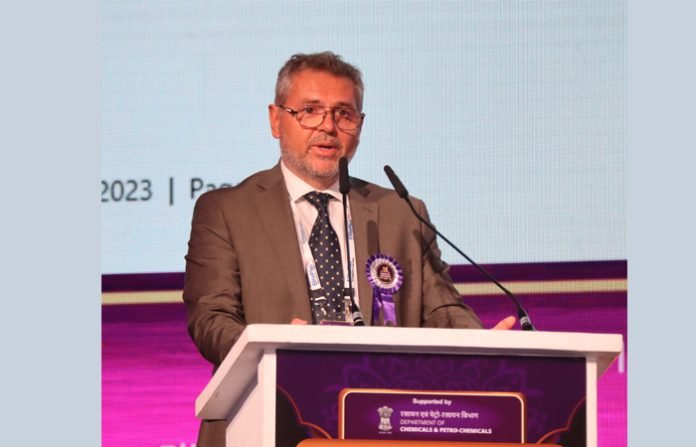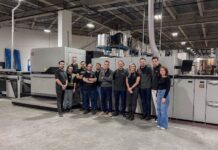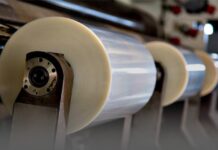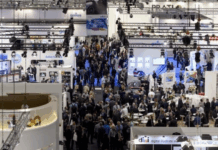Jonathan Giubilato, the Product Line director of Rotogravure of Bobst, at this year’s Elite, spoke of the company’s packaging capabilities in corrugated, labels, cartons, and flexible packaging. He emphasized the company’s strong presence in the subcontinent, both in terms of installations and personnel. Speaking of the three current trends in the rotogravure printing of flexible packaging, he reiterated some of the trends that dominated much of the sustainability solutions suggested over the two days by suppliers of raw materials, film, coating, ink, printing, and lamination technologies. In his presentation, these trends were water-based inks, extended color gamut printing, and adapting rotogravure printing techniques to new sustainable substrates.
Giubilato presented examples of reverse printing on 18-micron BOPP and on 18-micron BOPP + 12-micron METPET using both mechanically and laser engraved cylinders at speeds of 350 minutes a minute. The hoods on the Bobst presses were the V1750 for the color ink units and the 2V2200 for the white ink units.
Another example using water-based inks for 4-color inks and a white ink was run at 400 meters a minute using V3000 hoods for the color ink units and a 2V2200 hood for the white ink. In this case, the cylinder was mechanically engraved for the color and laser engraved for the full white background ink. The performance example showed a great reduction of VOC emissions using less than 10% solvent in the water-based inks. (This was considerably less solvent than what we have been hearing from some of the early adopters of water-based gravure in North India.)
Water-based gravure is still in its infancy in India with a few early adopters while it has been widely adopted in other Asian countries, especially China where solvent-based gravure is banned. Giubilato explained that there are challenges for traditional gravure printers that require process know-how for cylinder engraving and the machine set-up and for controlling the ink temperature and the humidity in the press room. In the case of Bobst, these are met with its high-efficiency ovens even at lower temperatures, which are able to distribute the hot air uniformly. In addition, the company’s gravure presses use motorized inking rollers and a doctor blade system with an anti-hazing system for uniform ink doctoring.
Bobst’s twin flow dryers with dual technology nozzles for impingement and flotation are claimed to be 30% more efficient than conventional curing systems. The company claims that these systems provide significant energy savings with their low-temperature curing and low exhaust volumes in addition to less solvent retention.
ECG printing on rotogravure
Bobst has been a pioneer in ECG printing using rotogravure presses. Giubilato presented the advantages of this approach that make job changeovers and makereadies 50% faster with less waste of material and inks. Naturally cleaning of inks after each job is eliminated. He also showed that gravure can become efficient for short runs using this process by putting several small jobs together on the same set of cylinders saving considerable prepress costs. The entire process requires less drying capacity and less energy as well. His example of running three jobs together at 300 meters a minute indicated a saving of 29% in production time and a material waste saving of 6%. Additionally, he pointed out that this process works for reverse printing of materials such as 20-micron BOPP at 300 meters a minute.
Giubilato ended his presentation by presenting the company’s work with both monomaterial polyolefin film structures and with the new fiber-based materials being used for various kinds of food pouches using its AlOx and AluBond metalized paper structures.
(Slight corrections made by the author on 9 October 2023.)










